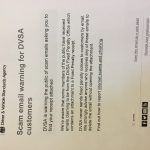We covered the limits earlier in another blog. 33 drivers who are caught high on drugs
each day: Positive results found in 40% of
cases where police perform roadside tests
Police are catching a record 33 motorists a day driving while high on drugs, figures show. In just one month, 1,000 motorists were found to be driving under the influence of drugs such as heroin, cocaine and
cannabis when they were pulled over by police. Official figures show that forces are now recording positive results for as many as 40 per cent of suspects who are stopped at the roadside and drug-tested. The numbers have highlighted the hidden epidemic of drug-driving across Britain. During a month-long summer blitz, police discovered around 4,500 drink-drive motorists and more than 1,000 with drugs such as heroin, cocaine and cannabis in their system. It follows a similar crackdown over Christmas when a campaign by police forces across Britain saw 933 drivers test positive for drugs. The figures, released by the National Police Chiefs’ Council, showed more people were detected drug-driving in December than in the whole of 2014. Nearly 50 per cent of the 1,888 drivers tested were found to be under the influence of drugs. In the summer blitz, almost 50,000 vehicles were stopped between June 10 and July 10 when the Euro 2016 football tournament was on. Around 45,000 breath tests were carried out, with one in 10 motorists found not fit to drive. Of those, 4,539 motorists tested positive for drink-driving or refused the test. Another 2,588 were screened for drugs, with 1,028 positive tests. In 279 cases, the driver had already been involved in a collision when they were tested, with 66 found to be under the influence of a banned substance. The Government announced fresh measures to tackle the problem of drug-driving with an extra £1million to pay for training in England and Wales police forces and equipment and new legislation to crack down on intoxicated motorists.


